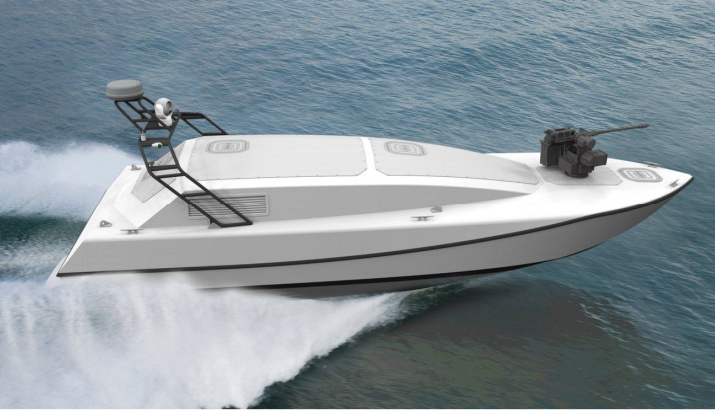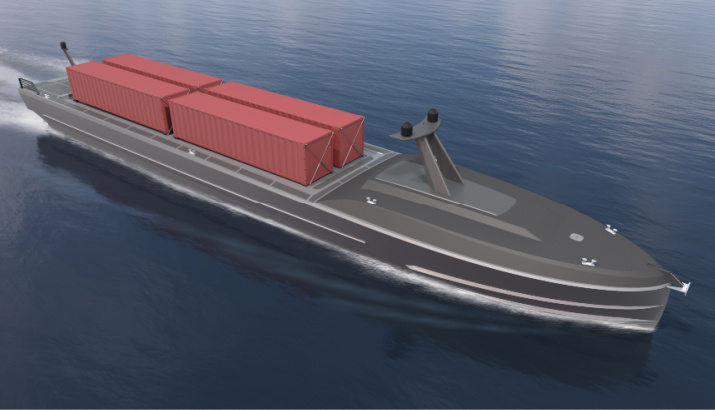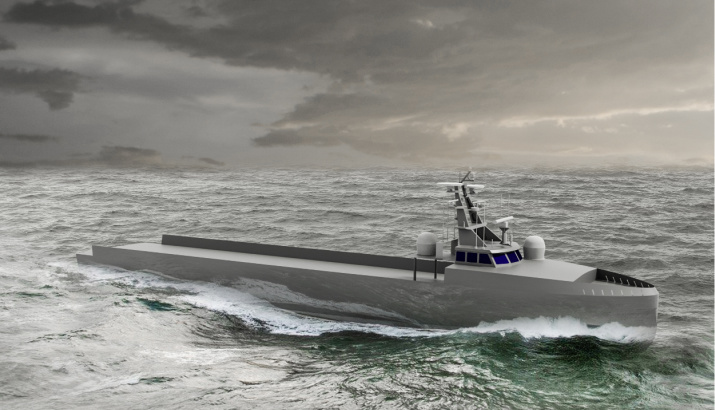Marine Autonomy

G&C is a leader in integrating the needs of government and commercial clients to develop and test seagoing autonomous systems. An unmanned system’s (UMS) autonomy is defined by its ability to independently sense, perceive, analyze, communicate, plan, make decisions and act to achieve goals assigned by its human operator(s). Autonomy is characterized into levels using factors like mission complexity, environmental difficulty, and level of Human-Robot Interaction (HRI), which are required to accomplish missions.
Gibbs & Cox’s tradition of innovation in marine and naval ship design continues today as a leader in unmanned and autonomous vessel development. Our initial work implementing advanced electronic control systems dates back to the 1955 production of SEA LEGS for the U.S. Navy. We devised an automated system that actively controlled two submerged hydrofoils in order to influence the pitch and roll attitude of the vessel in flight. This first application of actively controlled foils provided ride quality and safety that was superior to other vessels with fixed hydrofoils.
Electronic control systems and automation have come a long way since then, and we at Gibbs & Cox understand that marine vessel autonomy is much more than safe navigation and control. Our experience in developing unmanned and autonomous vessels for various clients begins with our understanding of autonomy and the challenges that come with it, and our willingness to team with the best in industry.

As an independent business, Gibbs is an ideal partner for other small, independent teams trying to get capability to the warfighter with the absolute minimum in overhead or hassle.
Our unmanned test platforms have thousands of miles of water under the keel—operating over-the-horizon and on long transits. We will get your technology out of the lab and onto the ocean.

If a USV or UUV is expected to perform more than a transit mission between points, autonomy becomes a much more complex problem. This is where commercial applications of remote control and vessel autonomy differ from military applications.
An autonomous military vessel is expected to perform self-navigation and control functions, but with the added requirement of performing complex mission evolutions in hostile environments.
Gibbs & Cox is dedicated to solving these challenges and both investigating and advancing the exciting potential of unmanned marine vessels.
Technical challenges in advancing USV technology include:
Ethical and legal challenges in advancing USV technology include:
How do we best take advantage of the opportunities Autonomy provides in the area of vessel design?
The success of long-term UMS deployments depends on its ability to monitor, predict, and diagnose performance degradations and failures in an HM&E system of systems, and then reconfigure systems for optimal use of available resources to satisfy ongoing mission requirements.
At Gibbs & Cox, we are collaborating with industry and R&D leaders in HM&E system design, reliability, and Artificial Intelligence to develop and field Unmanned Maritime Vehicles that will operate for long durations without human intervention. Our vision includes future integration with a broader Condition-Based Maintenance Plus (CBM+) paradigm, which will provide for just-in-time system maintenance during port visits.
Key features of the HM&E Autonomy System are:
From concept to sustainment, a Gibbs & Cox team combines cutting-edge naval architecture with the world’s most reliable marine engineering original equipment manufacturers (OEMs). At G&C, we partner with innovative, cross-domain Artificial Intelligence (AI) solution providers and reputable shipyards to deliver the best value for our customers.
Our customers benefit from our:
Image Credit: L3 Harris

We develop, integrate, and test on a modern CI/CD pipeline supported by sophisticated maritime Modeling & Simulation tools to quickly transform uncertainty to knowledge—value delivered for our clients from first increment to last.
